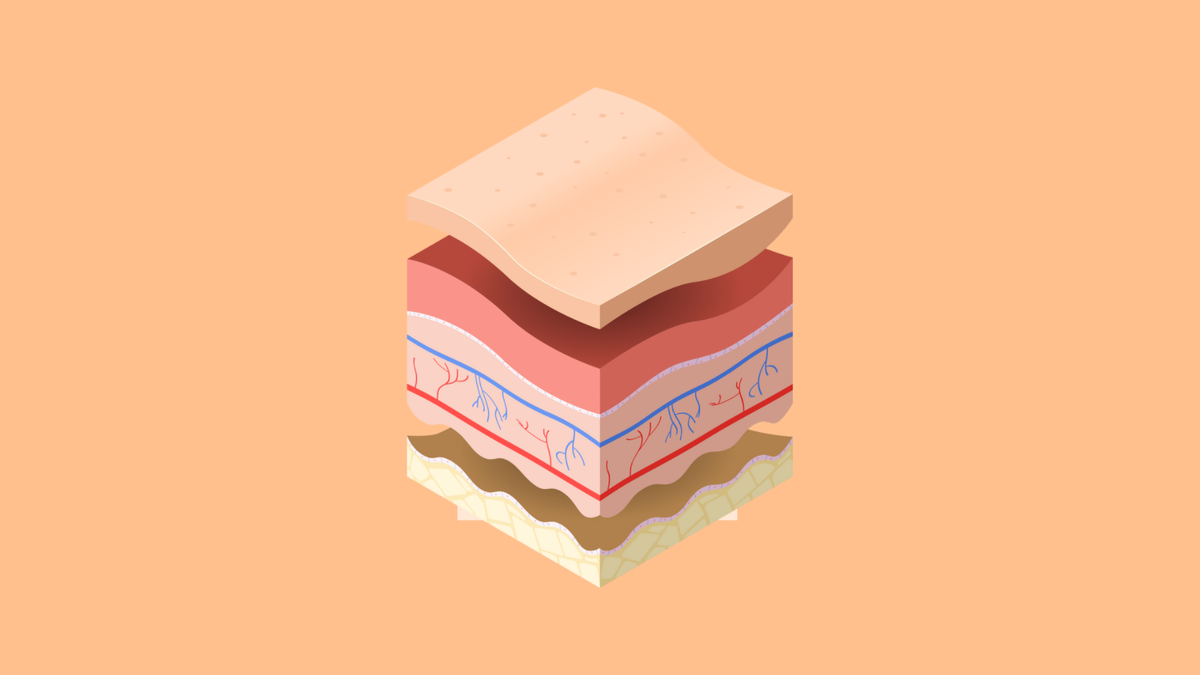The skin is a key organ, serving as a chemical, physical, and immune barrier between the internal milieu and the external environment. It acts as the first line of defense against pathogens, regulates body temperature, and prevents water loss. To properly comprehend its significance, it is necessary to understand the skin’s structure and the functions of its various layers. This blog discusses the anatomy of the skin, the importance of the skin barrier, and how to maintain a healthy barrier.
Structure of the Skin
The skin consists of three layers: the epidermis, dermis, and subcutaneous tissue. Each layer serves a unique purpose that contributes to overall skin health.
The epidermis
The epidermis is the skin’s outermost layer. It is made up of multiple sublayers, the most superficial being the stratum corneum. The main components of the epidermis are:
– Keratinocytes: These cells create keratin, a substance that gives the skin strength and waterproofness. Keratinocytes regularly form and shed, ensuring that the skin’s surface is regenerated.
– Melanocytes: Melanocytes are found in the epidermis’ basal layer and create melanin, the pigment that gives skin its color. Melanin also protects against ultraviolet light.
– Langerhans Cells: These immune cells help to defend the body by recognizing and presenting foreign antigens to the immune system.
The Dermis
The dermis, which is thicker than the epidermis, offers structural support and suppleness to the skin. The dermis has two primary layers: the papillary dermis and the reticular dermis. The key components of the dermis are:
– Collagen and Elastin Fibers: Collagen provides the skin strength and structure, whereas elastin allows it to stretch and return to its natural shape.
– Blood Vessels: These vessels transport oxygen and nutrients to the skin while also regulating body temperature through vasodilation and vasoconstriction.
– Nerve Endings: The dermis has a variety of nerve endings that enable the skin to sense touch, temperature and pain.
– Hair Follicles, Sweat Glands, and Sebaceous Glands: These structures arise in the dermis and have functions such as temperature regulation, skin lubrication, and hair growth.
The subcutaneous tissue
The skin’s deepest layer is the subcutaneous tissue, often known as the hypodermis. This layer consists mostly of fat and connective tissue. Functions:
– Insulation: Fat in the subcutaneous layer helps to keep the body’s internal temperature steady.
– Protection: This layer cushions the underlying muscles and bones, shielding them from external impacts.
– Energy Storage: Fat accumulated in subcutaneous tissue serves as the body’s energy reserve.
The importance of the skin barrier.
The skin barrier, which is largely found in the epidermis’ outermost layer (the stratum corneum), is critical for skin health and protection against environmental aggressors. The skin barrier serves several purposes, including:
– Preventing Water Loss: The barrier helps to keep moisture within the skin, avoiding dehydration while maintaining suppleness.
– Pathogen Protection: It acts as a physical barrier, preventing harmful bacteria and toxins from entering.
– Regulating Absorption: The barrier regulates the absorption of chemicals, allowing beneficial components to enter while preventing harmful ones from going out.
Factors affecting the skin barrier.
Several causes can damage the skin barrier, causing dryness, irritation, and increased susceptibility to infections:
– Environmental Stressors: Exposure to harsh weather, pollution, and UV radiation may all damage the skin barrier.
– Harsh Skincare Products: Products with strong chemicals, perfumes, and alcohol can deplete the skin’s natural oils, weakening the barrier.
– Aging: As we age, our skin’s natural renewal process slows down, and the production of essential lipids decreases, leading to a compromised barrier.
– Diet and Hydration: Poor nutrition and inadequate hydration can affect the skin’s ability to maintain a healthy barrier.
Tips for Maintaining a Healthy Skin Barrier.
Maintaining an excellent skin barrier is critical to overall skin health. Here are some strategies to help you create and maintain a strong skin barrier:
1. Hydrate Your Skin: Hydration is essential for keeping a healthy skin barrier. Use moisturizers with humectants like hyaluronic acid and glycerin, which draw water to the skin. Emollients, such as ceramides and fatty acids, serve to strengthen the barrier by filling in the spaces between skin cells.
2. Gentle Cleanse: Choose a gentle, sulfate-free cleanser that does not deplete the skin’s natural oils. Over-cleansing or using harsh soaps can damage the skin’s barrier, causing dryness and irritation.
3. Sun Protection: Use a broad-spectrum sunscreen to protect your skin from damaging UV rays. Apply sunscreen every day, even on cloudy days, and reapply every two hours while in direct sunlight.
4. Avoid Harsh Ingredients: Avoid skincare products with alcohol, perfumes, and other harsh substances. These substances might irritate the skin and decrease its barrier. Choose products with calming components.
5. Healthy Nutrition and Hydration: Consume a diet high in antioxidants, vitamins, and healthy fats to promote skin health from the inside. Fruits, vegetables, nuts, and seafood include vital elements that improve the skin barrier. Drink lots of water to keep your skin moisturized.
6. Barrier Repair Products: Use products that are specifically formulated to repair and reinforce the skin barrier.
7: Proper Skincare Routine: Adopt a consistent skincare routine that consists of cleansing, hydrating, and protecting your skin. Tailor your regimen to your skin type and make modifications as needed to account for environmental changes and skin needs.
Understanding your skin’s layers and barrier is the first step to radiant health—protect your skin, and it will protect you in return

